History – William Fuld & the Ouija Board
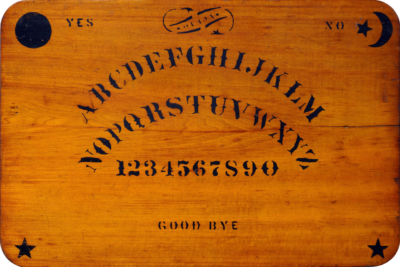
Baltimore Origin of the Ouija Board
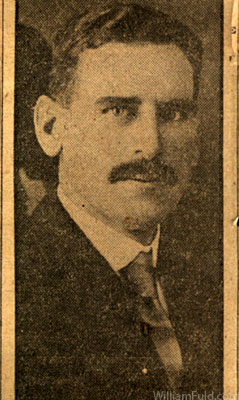
The Ouija board was invented right here in Baltimore, some say by Charles Kennard. In 1891, he pulled together a group of four other investors William Fuld, Issac Fuld, A Commodore, and Elijah Bond, a local attorney—to start the Kennard Novelty Company. Elijah Bond’s grave is located nearby in Greenmount Cemetery and is notable for being designed like the Ouija board.
Though many of its kind existed previously, the name Ouija is now synonymous for all spirit boards. The name was coined by Helen Peters, a medium who was testing out the board with her Brother-in-Law, Elijah Bond one night. When asked what they should call the board, the planchette spelled out “Ouija”. When asked what that meant, the board responded with “Good Luck.”
William Fuld, one of the original investors of Kennard Novelty Company would later grow the company and popularize Ouija around the world. Many of the Ouija boards were produced right in this and the surrounding neighborhoods
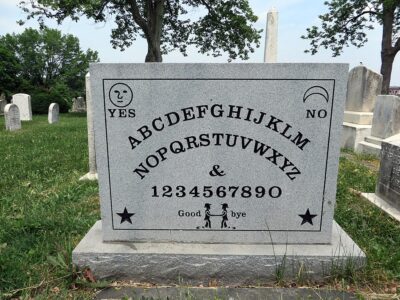
William Fuld was known to be a regular user of the Ouija board; in fact in 1917 the Ouija told Fuld to “prepare for big business.” Following these instructions Fuld built his largest facility down the road on Hartford Rd. In 1927 William Fuld fell from the roof of a building that the Oujia board told him to build. He died, but made his family promise to keep Oujia boards in the family. The Ouija board was acquired by Hasbro in 1991.
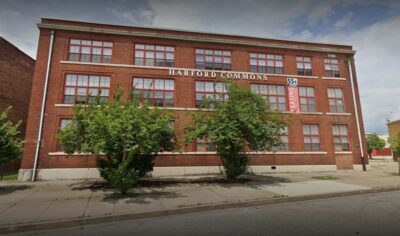
For a very in depth history of the Ouija board we highly recommend checking out https://www.williamfuld.com/
The William Fuld – Isaac Benesch Secret Society Connection?
Isaac Benesch, of Isaac Benesch and Sons Great House, is the man who built the building that is currently home to The Nevermore Haunt. William Fuld and Isaac were contemporaries in Old Town in the late 19th century.
Were Benesch and Fuld acquaintances, friends? They were both Jewish German immigrants and businessmen in this very neighborhood. Did the Beneschs conduct seances here back in the late 19th century? We do not know for certain.
It is known that both were also members of two secret societies: The FreeMasons and the Order of the Heptasophs
Many are familiar with FreeMasonry but the few are familiar with the much smaller Order of the Heptasophs.
Excerpt from Cyclopedia of Fraternities, published 1899
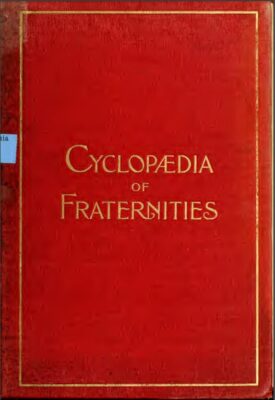
“The Heptasophs declared that ” the earliest traces of the Order defy chronology, reaching far back into the twilight of legend and tradition clustering about the Magi of the East, which ante- date the Druids of Gaul and Britain, and probably the Masons who existed in Judea.” The first alleged “authentic history” of the Seven Wise Men is so ingenious and interesting as to merit a permanent record. It takes the Order back to the period 1104 B.C., and couples it with the name of the first Zoroaster, who is said to have been the head of the Magi of Persia at that time.
From these Magi, Persian kings had to receive instructions in the art of reigning and in worship before they could come to the throne, and from the most illustrious of their numbers the king had to select six wise men as counsellors, who, together with the monarch, constituted the celebrated council of seven. In a subterranean cavern, beneath the royal palace at Ispahan, the capital of Persia, was the only spot where it was lawful to impart the most occult mysteries of the seven, and to which the heir of the throne was only admitted for merit and not of right. For many centuries the philosophy of the Seven Wise Men formed the basis of the polity of the Persian dynasty, and without whose advice the king on the throne determined no important matter. As one among many evidences of this, we refer to the language of Feridon (200 years B.C.), who, under the advice and guidance of the seven, after twenty years of exile with them, successfully revolted against Zohak, the usurper, and came in triumph to the throne of his fathers. He said (referring to the S. •. W. M.’.) : “Have they not for centuries been the advisers and counsellors of the mighty rulers of this spacious realm ?” Firdisi, the eminent Persian historian, records that in the time of the illustrious King Kayomers, who reigned 900 years before Christ, the council of seven were styled by the grateful people ” the earliest distributors of justice.” On his deathbed this great ruler exhorted his son and heir to the throne to adhere to the teachings of the Seven Wise Jlen, which was religiously done by him and his sons after him, until the dynasty of the Kayomers came to be called Pashdaidans, which means dis- tributors of justice. It appears that about a.d. 638, Yezdefird, King of Persia, was conquered by Mohammed, then styled “Camel Driverof Mecca,” and with his downfall perished the influence of the Seven Wise Men in the national affairs of Persia. They, however, left the impress of their philosophy and wisdom upon the history of that country run- ning through a succession of centuries, rendering their kingdom glorious and its subjects happy by their devotion to justice and the inculcation of Wisdom, Truth, and Benevolence long before the brighter and grander glories of Greece dawned.
This brought the Order down to the golden era of Greece, from whence “the transfers … to Rome, from Rome to Britain and the Western world ” were presumed to follow. It might prove interesting to speculate ou the possibility of the mysteries of the Seven Wise Men of old having been carried from Rome by means of the workingmen’s guilds of the early and middle ages to England, as an inner circle or cult, in the recesses,, as it were, of ancient craft Masonry, which, some have declared, crossed Europe in that manner. Be that as it may, the original Seven Wise Men in America built beautifully and well from a ritualistic point of view. That their ceremonials and ritual did not imbibe Freemasonry from Masonic guardians and protectors on a secret journey from Persia to Greece, through Italy and North to England, but acquired it at New Orleans, where the Society was formed.”
